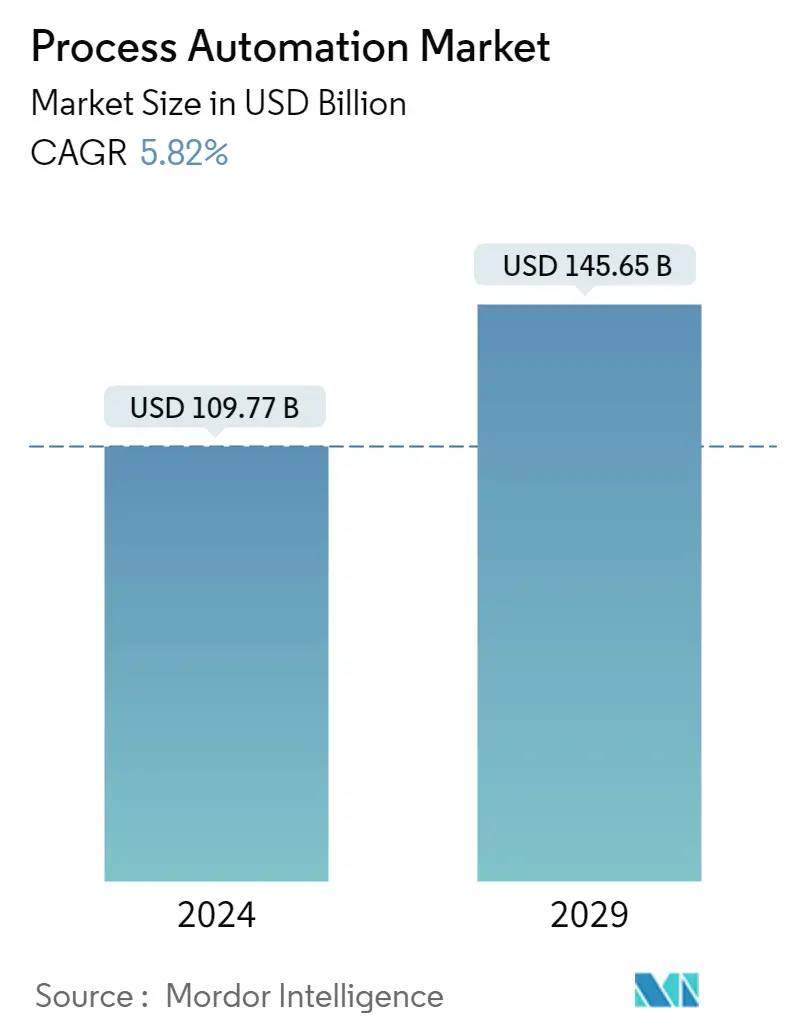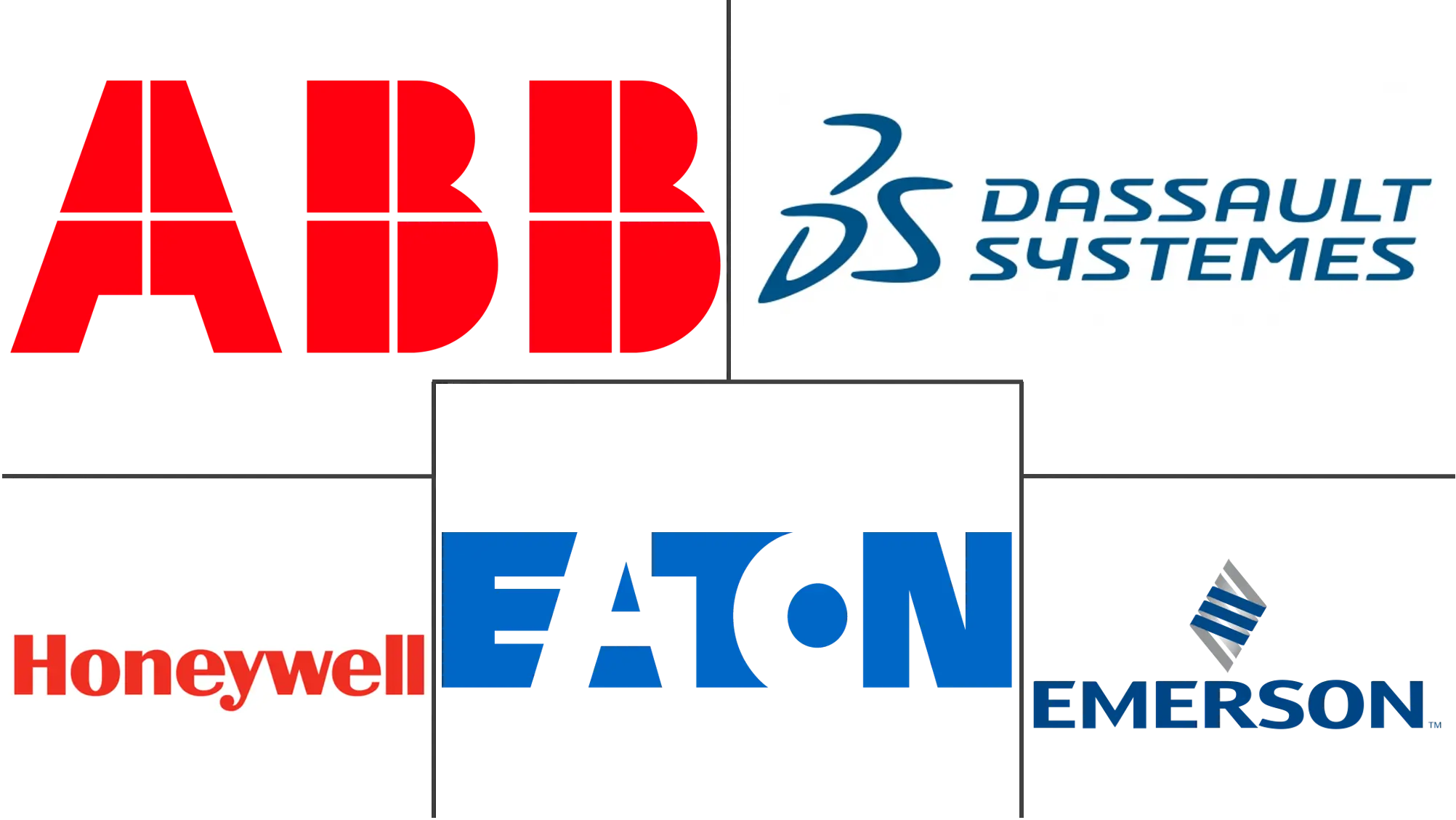Market Size of Process Automation Industry

| Study Period | 2019 - 2029 |
| Market Size (2024) | USD 109.77 Billion |
| Market Size (2029) | USD 145.65 Billion |
| CAGR (2024 - 2029) | 5.82 % |
| Fastest Growing Market | Asia Pacific |
| Largest Market | North America |
Major Players
*Disclaimer: Major Players sorted in no particular order |
Need a report that reflects how COVID-19 has impacted this market and its growth?
Process Automation Market Analysis
The Process Automation Market size is estimated at USD 109.77 billion in 2024, and is expected to reach USD 145.65 billion by 2029, growing at a CAGR of 5.82% during the forecast period (2024-2029).
The Industrial Internet of Things (IIoT) and the Industrial 4.0 are at the center of new technological approaches for development, production, and management of the entire logistics chain, otherwise known as smart factory automation and are dominating trends in the industrial sector, with machinery and devices being connected via the internet. The number of IoT connected devices rose to 20.35 billion in 2017 from 15.41 billion in 2015 and is expected to reach 51.11 billion by 2023, given the huge push from the investment of the technology providers through continuous research and development.
- The growing emphasis on energy efficiency and cost reduction drives the market. The rising digital revolution resulted in an increased focus on automation, which is likely to improve quality and flexibility in the manufacturing process. Governments across the world enacted various policies in favor of automation, with an intention to improve energy efficiency while reducing the costs incurred. For instance, in 2019, Malaysian government launched a National Policy on Industry 4.0 (Industry4WRD). A budget of over USD 1.2 billion was allocated to help businesses adopt Industry 4.0.
- Within the allocated budget, a total of USD 720 million was allocated to accelerate the adoption of smart technologies, such as automation, in addition to robotics and artificial intelligence under the name as Industry Digitalization Transformation Fund, and USD 480 million was allocated under the Business Loan Guarantee Scheme (SJPP) for SMEs planning to invest in automation and modernization.
- Further, the demand for safety automation systems drives the market. In the present day, businesses are provided with significant incentives, primarily investments in automated systems, owing to technological advancement. Automation can also provide solutions to address persistent safety challenges, and, thereby, attracting the industry players to deploy safety automation systems, in addition to achieving higher levels of efficiency and precision.
- For instance, Bosch's plant in Toluca, Mexico, has been using photoelectric light curtains around a machine whose work involves the installation of needle bearings in engine shafts. These light curtains have been responsible to greatly improve the safety and productivity of the machine. Thus, technological advancements will allow manufacturers to incorporate machine learning and other artificial intelligence solutions, mainly to enhance safety.
- Further, theCOVID-19 pandemic created an economic turmoil for small, medium, and large-scale industries across the world. The country-wise lockdown inflicted by the governments around the world, to minimize the spread of the virus, impacted the growth of industries. Due to pandemic, it forced the businesses to adhere to strict requirements in order to ensure the ongoing safety of their employees and customers. As a result, the need for automation witnessed a sudden spike. This is expected to be observed as a notable trend in the foreseeable future, as automation could become the new normal.
- In addition to ensuring that businesses are capable of meeting target production levels in these times, automation can also support the gradual recovery post the control of epidemic, to a larger extent. The situation may also serve to accelerate the investments in automation across process industries, primarily with an intent to bridge the productivity gap, when the global economy eventually rebounds, but gradually.

